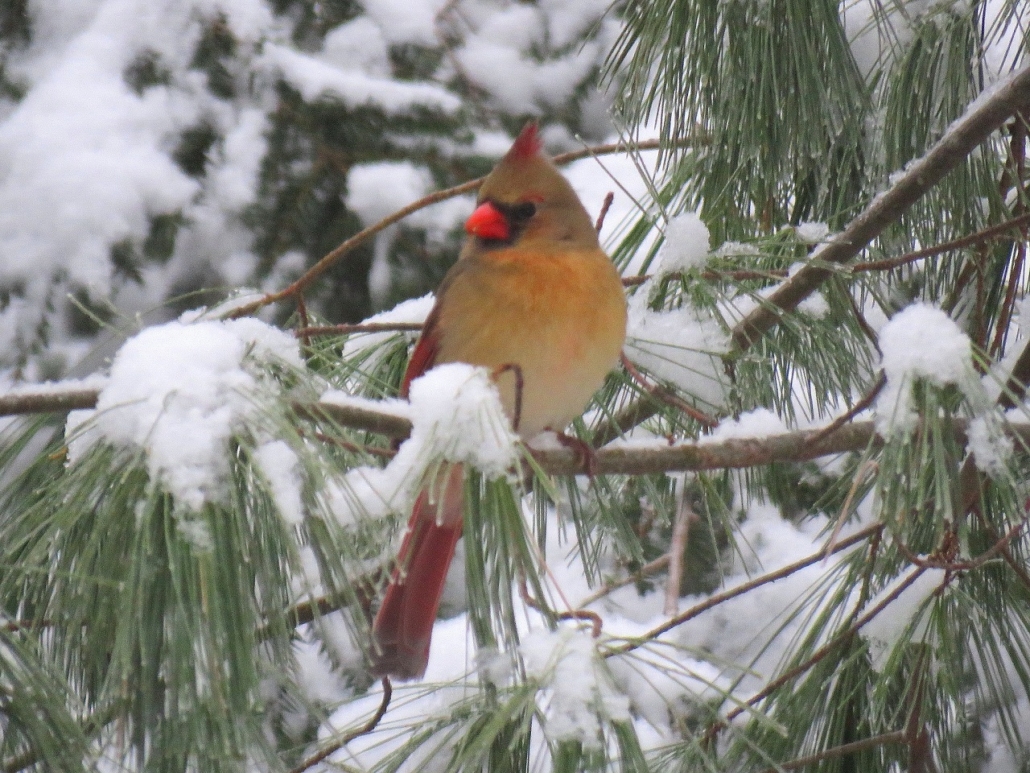
clover mite
Have you ever heard of clover mites? Neither had I. Until, that is, a couple of weeks ago when a friend told me of her encounter with some. So, let’s take a closer look at them.
First of all, clover mites flourish in early spring.
This dark reddish-brown pest, which is smaller than a pinhead, does not pose a threat to human health or cause major damage to homes, but it can be a severe nuisance when it invades structures.
The sight of clover mites in the house can cause distress. However, clover mites do not bite humans or cause adverse health issues. Despite this, most homeowners are not exactly thrilled to see large numbers of these small, red-colored bugs crawling around indoors.
Clover mites differ from many pests in that they prefer cooler weather. Clover mite activity increases as temperatures start to drop, during which time they pay homage to their name by feasting on clovers, over-fertilized grass and many other plants. In fact, clover mites eat more than 200 different plant species, including some flowers. Their activity peaks in the cooler, early spring months when they can become the greatest nuisance to homeowners – so be prepared to see clover mites en masse this time of year.
Once the hotter summer weather arrives, clover mites will lay eggs and go into hiding. In the northeastern U.S., for example, they may go into a dormant state around May and remain that way until September. Any eggs that are laid in fall will overwinter until hatching the following spring. These eggs are often positioned in the cracks and crevices of a home’s exterior or between walls, creating issues for homeowners upon hatching.
Home infestations are most severe when sudden changes in weather or habitat occur. Populations typically move indoors in autumn when the plants that clover mites feed on start to perish, causing these pests to invade in high numbers — even by hundreds of thousands. Additional infestations occurring in the spring are typically driven by the sudden growth of lush vegetation around a home’s perimeter, which is especially palatable to clover mites.
When smashed, adult clover mites leave behind a red stain, especially on items such as curtains, wallpaper, rugs and other furniture that are lighter in color. As such, clover mites found in the home should be vacuumed up instead of crushed. This stain is not the mite’s blood, but is the mite’s body pigments.
So, what to do about them.
There are steps homeowners can take to prevent clover mite infestations indoors. For starters, thick vegetation or plants that are known to attract clover mites should be removed in an 18- to 24-inch band around the perimeter of the home. Likewise, homeowners should inspect the structure, including the foundation, window frames and siding for cracks that may serve as entry points. These spaces should be properly sealed to prevent clover mites from laying eggs or entering the home.
If homeowners notice any signs of clover mite activity on their property, they should contact a licensed pest control professional to resolve the issue.
Your pest management professional will perform an inspection and use the inspection findings to prepare an integrated pest management plan for clover mite control. Your PMP will use his expertise and knowledge to recommend the application of effective and efficient chemical control measures to reduce the clover mite problem. However, his control program will likely include some helpful preventive measures the homeowner may choose to employ, as well. Among these preventive measures are:
– Using a wet sponge or a crevice attachment of a vacuum cleaner to remove mites, making sure to take precautions to avoid crushing the mites and causing stains.
– Remove all grass and weeds from around the foundation perimeter and leaving vegetation free strip about two feet wide. This method is especially important on the south and southwest sides of the structure. Clover mites are not as likely to move through bare, loose soil as they are through soil that is supporting plants that touch the structure’s foundation. Use of pea gravel can also discourage mite movement into the structure.
– Sealing holes, cracks and gaps on the foundations, windows and doors, thus helping discourage mites from entering the structure.
– Making sure to use window screens that are tight fitting.
– Making sure not to over-fertilize the lawn or ornamental plant areas since clover mite populations tend to do better in lawns that are well fertilized.
Observance of the reddish colored clover mites crawling on surfaces such as windowsills and siding on the sunny sides of homes are the most obvious indicator of an infestation.
Although clover mites are not a danger to human health and do not destroy furniture, clothing or food items, they can become an indoor nuisance when invading homes, business and medical facilities. Once inside, they will soon die, but not until they have created problems resulting from an annoying presence and cosmetic damage.
Clover mites are not blood feeders, but feed on plants, getting their nutrition from sucking plant juices from grasses, clover and other plants common to lawns. Clover mites can become a nuisance in multi-story buildings since they can live on rooftops and patios where mold or mildew provide sources of food.
Clover mites go through four life stages – eggs, larvae, nymphs and adults. The clover mite overwinters in any dry, protected location primarily in the egg stage. Sidewalk cracks, walls of buildings and logs can host vast numbers of overwintering eggs.
The overwintering eggs hatch early in the spring and clover mite adults become active as soon as the temperature warm above about the mid-40s and begin to climb up the exterior walls from the ground and gain entrance around windows and doors. Overwintering mites hatch in the spring and begin to produce second generations. Spring generations will aestivate, which is a form of summer hibernation where mites go inactive on warm, dry days. Second generations typically complete in the fall.
Clover mite populations may become large since females can lay up to 70 eggs and each becomes a mature adult in 30 days or less under suitable circumstances. Clover mites reproduce without being fertilized by the males.
Clover mites are found throughout the United States.
I think I will keep a closer eye out for those little pests.
Roland’s trivia question of the week:
Former Red Sox pitcher Wade Miley recently pitched a no-hitter for the Cincinnati Reds over the Cleveland Indians. Who was the last Red Sox pitcher to throw a no-hitter?
Answer can be found here.







 Home health aides are professionals who can help with self-care, housework, cooking and more. They might also perform some basic medical tasks. Home health aides sometimes have medical training, so they might be certified nursing assistants (CNAs) or licensed practical nurses (LPNs). However, there aren’t any specific standards requiring a home health aide to have particular training or certification. If you’re looking for someone to help with any medical-related tasks, ask about certifications when choosing your provider. Medicare or Medicaid might pay for help from a home health aide.
Home health aides are professionals who can help with self-care, housework, cooking and more. They might also perform some basic medical tasks. Home health aides sometimes have medical training, so they might be certified nursing assistants (CNAs) or licensed practical nurses (LPNs). However, there aren’t any specific standards requiring a home health aide to have particular training or certification. If you’re looking for someone to help with any medical-related tasks, ask about certifications when choosing your provider. Medicare or Medicaid might pay for help from a home health aide.







